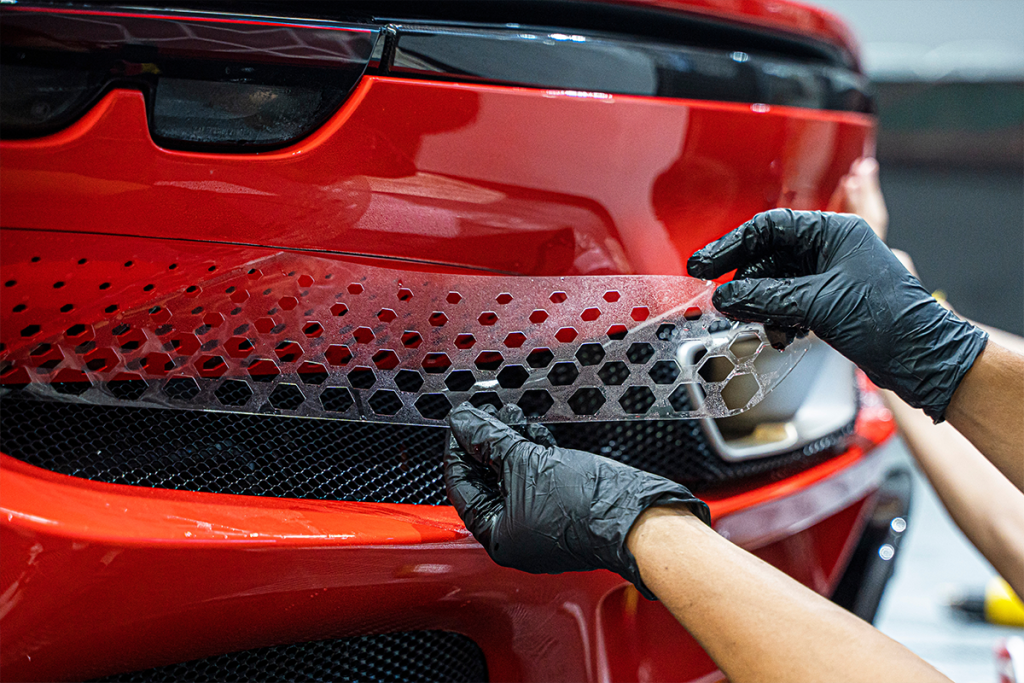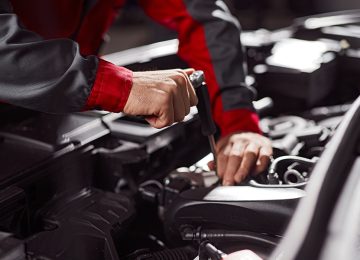Your car’s bumper is the first to take hits from daily driving—whether from highway debris, parking scrapes, or bugs splattering at high speeds. It’s no surprise that the bumper is one of the most common areas people choose to protect with Paint Protection Film (PPF). But is it enough to apply PPF only to the bumper? Or should you consider covering more of the vehicle?
Let’s explore what bumper-only protection offers and whether it provides complete peace of mind—or just a partial solution.
Why Start with the Bumper?
Most Vulnerable Area
The front bumper is constantly exposed to gravel, salt, tar, insects, and flying road debris. These elements can quickly chip paint, leaving the surface dull, scratched, or even corroded.
Installing PPF on the bumper creates a durable, nearly invisible barrier that absorbs impact and shields against wear, preserving both aesthetics and resale value.
Cost-Effective Entry Point
For many car owners, full-body PPF coverage may not be in the budget. Starting with a bumper-only application provides meaningful protection at a fraction of the cost—typically ranging from $300 to $700 depending on vehicle type and film quality.
What PPF Really Protects
Paint protection film isn’t just about aesthetics—it helps reduce long-term maintenance, costly paint jobs, and potential rust formation from exposed primer or chipped areas. A high-quality pellicule pare-perre Proshield not only guards your bumper but also offers self-healing properties and UV resistance to maintain a consistent, glossy finish.
Is Bumper-Only Coverage Enough?
Pros
- Targeted protection: Shields the area with the highest impact risk.
- Budget-friendly: More affordable than larger coverage zones.
- Quick installation: Can often be done in under a few hours.
- Good for city drivers: Especially useful for cars that face frequent parking hazards or urban road debris.
Cons
- Leaves other zones exposed: Your hood, fenders, side mirrors, and door edges remain vulnerable.
- Inconsistent appearance: Over time, untreated areas may fade or develop imperfections, creating a contrast in paint finish.
- Misses out on resale value: Buyers often look for overall condition—not just the bumper—when assessing a used car.
What’s the Ideal Coverage?
While bumper-only PPF is a great start, many detailers recommend at least a partial front-end package, which includes:
- Full front bumper
- Full or partial hood
- Front fenders
- Side mirrors
- Headlights
This offers comprehensive front-end protection—the zone most likely to take impact while driving.
If budget allows, a full front or track package (which adds rocker panels and rear wheel arches) gives you near-complete protection for your car’s most damage-prone surfaces.
Choosing the Right PPF for Your Bumper
For high-performance and long-lasting clarity, go with a film that offers:
- Self-healing properties
- Hydrophobic topcoat
- UV and chemical resistance
- Flexible installation on complex curves
The pellicule pare-perre Proshield stands out in this space with its exceptional durability, edge-sealing technology, and optical clarity. It’s designed to wrap seamlessly around bumpers—whether flat or sculpted—and offers reliable protection against the daily abuse your car faces on the road.
Final Thoughts
Installing PPF on your bumper alone is a smart, practical step toward vehicle protection—especially if you’re budget-conscious or new to paint preservation. However, keep in mind that bumpers are only part of the picture. For fuller protection and long-term value, consider expanding coverage to other exposed zones over time.












